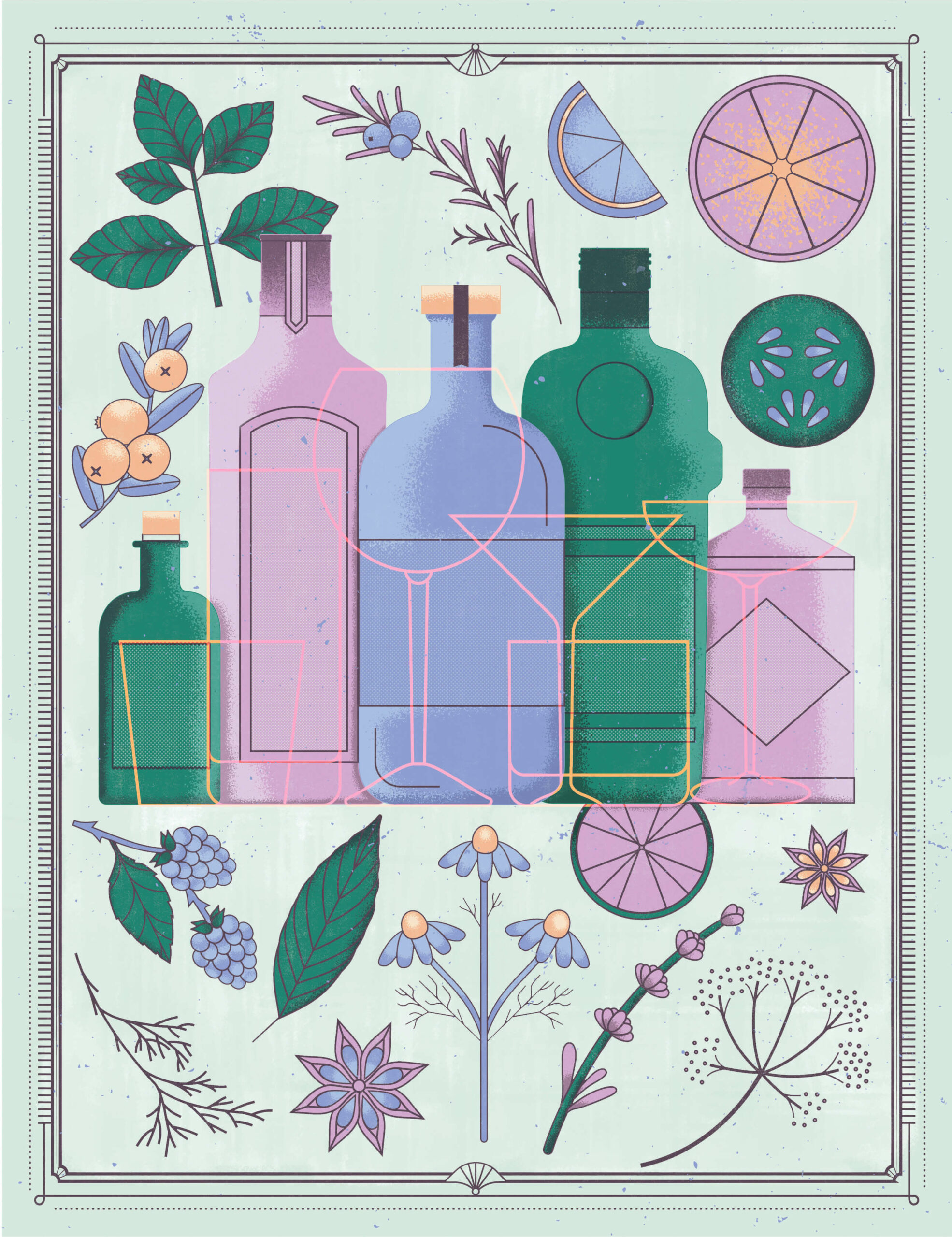How I stopped worrying and learned to love gin.
Of all the spirits, gin surely has one of the most complicated relationships with people’s taste buds. For some, just the smell of gin is enough to make them quiver in fear; for others, there is not a single sunny afternoon that a gin cocktail can’t make better. Gin has been made since the 17th century and is the mother of countless cocktails, but it can be hard to understand because of its storied past and complicated style. Join me in coming to understand gin and learning how to find the right one for you.
Complicated Past
Taste and smell can unlock some of our most profound memories and emotions. If your first experience with gin was not so positive, it is easy to have an aversion to that flavor; in fact, our brains are hardwired to do so. Conditioned taste aversion is a tool that goes back to the hunting and foraging parts of our brains. When our ancestors ate something that made them sick, that flavor became a warning to avoid that taste. Suppose a gin gives you an epic hangover associated with a negative experience. It is easy not to want to try gin again in that case. Re-experiencing gin in new contexts with new flavors is a great way to change those negative sensory memories and make new ones.
Symphony of Flavors
I classify gin on a spectrum of noisy and quiet; some styles of gin are a cacophony of flavor and others a delicate duet of a few carefully chosen tastes. Part of this has to do with how we create the spirit. Gin, at its core, is a neutral spirit infused with botanicals, juniper generally being the star of the show, with the end goal of a balanced finished product. Because the idea of gin is so broad, the flavor combinations used can be endless. For example, London dry gin is generally made with fewer ingredients to keep the gin sharp and dry, while new American gins can be bold and citrus-forward using regional botanicals and complicated techniques. The key to learning to love gin is to try the brave new world of its many styles.
Bartenders love gin; the spectrum of flavors found in a gin makes for beautiful cocktails.
“I love changing the hearts and minds of people who believe that they genuinely don’t like gin,” says John Blomquist, owner of Pizen & Wine Mobile Thirst Parlor in Reno. “Each gin is different and can lend a unique set of characteristics to cocktails.”
Often cocktails call for specific styles of gin. A good rule of thumb is to trust your nose; if a gin smells like bright citrus and herbs, consider what flavors you like with lemon, grapefruit, and thyme, such as sweeter flavors. If a gin smells purely of a bold juniper, think about what might complement that big flavor with additional complex ingredients, such as elderflower tonic water. I love an herbaceous gin in my Tom Collins or a higher-alcohol-content gin in my gin and tonic.
“If you love cocktails, you should like gin. Gone are the days when drinking gin is like drinking a Christmas tree,” says Annalisa Suarez, beverage manager of Craft Wine + Beer and director at 10 Torr Distilling and Brewing, both in Reno.
She recommends trying new gins in martinis, a traditional gin-forward cocktail, to find the proper gin for you.
Michael C. Moberly is a spirits educator and creative consultant. His 14 years in the industry have been spent learning, loving, and imbibing with some of its best minds, both locally and nationally. He also is good at wearing hats.
Tony Jacklin
(courtesy of Michael C. Moberly, spirits educator and creative consultant in Reno. Serves 1)
1½ ounces 10 Torr London Dry Gin
4 ounces lemonade
4 ounces chilled hibiscus tea
Mint leaf, for garnish
Combine all ingredients in a tall glass, add ice, and enjoy!
The 50/50 Martini
(courtesy of Michael C. Moberly, spirits educator and creative consultant in Reno. Serves 1)
1½ ounces St. George Botanivore Gin
1½ ounces Dolin Dry Vermouth
1 dash orange bitters
Combine ingredients in mixing glass, add ice, and stir for 45 seconds. Strain into chilled martini glass, and serve with a peel of your choice of citrus.



